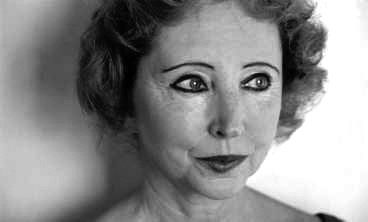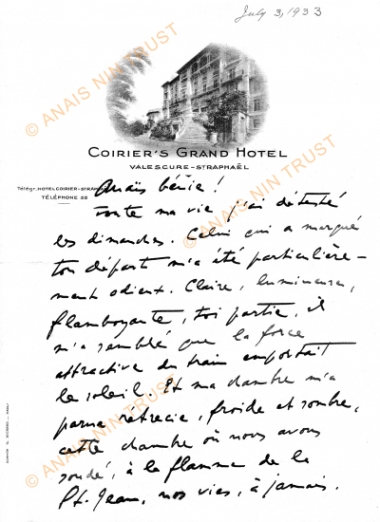Was Anaïs Nin’s writing feminist in nature? There is a dichotomy in responses. In her article “Feminist Smut (?)” (A Café in Space Vol. 6) scholar Angela Carter makes the statement that one of the works most vilified by feminists—the erotica—is actually feminist. Carter sees the erotica as a writing out of the struggles women had with sexual identity and expression in a patriarchal world. In the same issue, Sarah Burghauser writes that her perception of Nin was swayed by the attacks from feminists who claimed not only was Nin insincere and essentialist, she used the Women’s Movement to “sell books.” Bruce Watson, in his article “Claiming Ownership—Issues in Nin criticism,” takes note of the backlash of feminists directly after the release of Diary I, but he also explains how others have attempted to equate Nin’s style of diary writing to a form of feminist expression, an argument that has taken hold as time goes on.
When the diaries came out during the late sixties and early seventies, at the height of the Women’s Movement, women divided themselves into two distinct camps: those who believed that while Nin was not a typical “bra-burner,” she was a leader in the establishing women as distinct figures with unique gifts and the need for freedom of expression; on the other side were those who felt Nin had betrayed the Women’s Movement by being “too feminine,” i.e., using her womanly charms to attract men, using men to achieve her success.
There was a misconception from the onset: when the original Diary came out in 1966, readers assumed that Nin accomplished everything alone, that there was no man supporting her, that she was a feminine pioneer, especially in the light of the fact she wrote the diary in the 1930s when few women ventured from the kitchen into the world of art, literature, or making a living. When these readers discovered that Nin in fact had a husband who was her financial backbone, not to mention an anchor who gave her the safety net she seemed to be living without, they felt betrayed. “Fraud,” they cried. Some of them attacked Nin at lectures, in print, and in the media, echoes of which resound to this day. The irony is this: had these very readers read editor Gunther Stuhlmann’s introduction, they would have known that Nin indeed was married, and that it was her husband’s wish to not be mentioned in the Diary. So, did Nin mislead her readership in this way? Not if you read the disclaimer.
In this sense, part of the argument against Nin’s feminism doesn’t hold water, but this only one minor aspect of the dispute. There are many other points to argue, but under no circumstances did Nin enter the confrontational or militant, anti-male sector of feminism. Women could not become stronger or freer by acting like men, Nin argued, and using man’s weapons—aggression, intolerance, brutishness—was counterproductive. Despite the rationality of this stance, it seemed to create the strongest resentment of Nin by feminists.
Judging from the arguments made by scholars and feminists, pro and con, the controversy of Nin’s feminist philosophy, or whether she even had one, will continue until the world gets to the point where her vision of sharing what we have to offer as men and women, equal in each other’s eyes, becomes a reality. Are we drawing closer?



